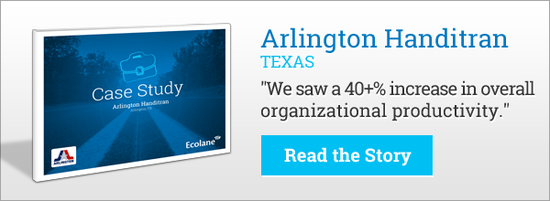For rural transit agencies, it’s critical to understand the unique requirements of its ridership. Rural passengers have different expectations compared to passengers in urban areas, and these expectations must be considered to ensure optimal service. In an effort to help guide rural transit agencies in optimizing their service, this latest Ecolane post looks at the unique aspects of the rural transit system.
1 - Lack of Workforce Flexibility
Rural transit agencies lack resource flexibility because they are dependent on a smaller number of drivers and vehicles. One bus being out of service in an urban transit system might not impact the entire network. In a rural setting, however, this can cause a significant service bottleneck. Agencies need to harness the power of a transit software such as Ecolane’s DRT to create efficiencies. Providing real-time access to system data and deployment functionality can help operators maintain this necessary flexibility.
2 - Lower Population Levels
Smaller rural agencies service up to a few hundred passengers daily while many larger urban transit agencies work with thousands of passengers across their network. However, rural transit agencies still need to place a clear emphasis on highly customized services. Transit software systems, such as Ecolane’s DRT, can be implemented to provide drivers with real-time traffic updates and to help determine the ideal route to take. Additionally, alerts can be sent directly to passengers to notify them of any delays or changes that have been made to their scheduled trip. Making connections with individual rural transit users through the efficiencies created by transit software allows agencies to deliver an enhanced rider experience and nurture a stronger connection with their communities.
3 - A Larger Number of Older Passengers
More seniors, than ever before, are choosing to “age-in-place”, which means that on-call transportation needs have increased significantly for agencies. This places a significant strain on resources within rural communities. To offset the increased passenger demand, rural transit agencies must have processes in place to allocate vehicles and drivers more efficiently for this aging population.
4 - Rural Passengers Take Longer Trips
Rural areas tend to be more sparsely populated and trip destinations are spread out across larger distances compared to urban areas. Transit operators are tasked with ensuring efficient use of their vehicles across these rural areas while delivering superior services to their communities. The use of historical data analysis regarding vehicle gas consumption, passenger trip preferences and traffic information can help rural operators ensure their system remain efficient over longer distances.
5 - Lack of Taxi Service Increases Dependency on Transit for Rural Communities
Within smaller communities, a lack of taxi options means that rural transit agencies are tasked with building customized routes with flexible scheduling for their passengers. This further highlights the need for rural transit software systems that analyze resource availability throughout the day and plot routes based on the most efficient use of vehicles while supporting optimal service in rural communities.
By learning more about the unique aspects of rural transit systems and implementing the latest data analysis tools, rural operators can ensure their systems work to peak performance around the clock and support mobility across their communities.
To learn more about the unique aspect of rural transit systems management, check out the Arington Handitran case study.
About the Author

Ecolane
Read Ecolane's blog articles for perspective, opinion and information on transit and paratransit issues.


